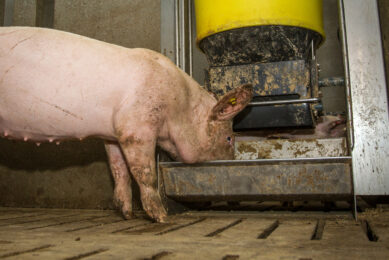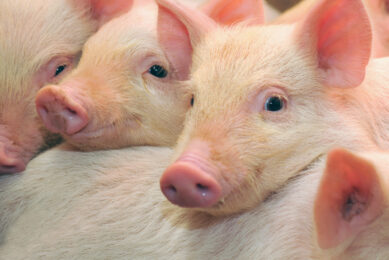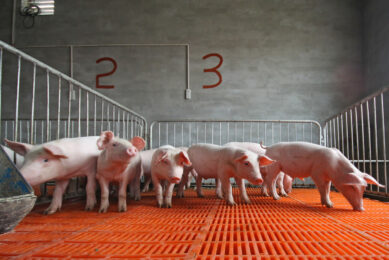High time for net energy
When was the last time you checked your formulations? If your diets are still formulated on digestible energy (DE) or metabolisable energy (ME), it is high time to question these nutrition practices. The net energy (NE) system is by far the best and most accurate system to use in all pig diets and it will enable you to better match available ingredients with actual animal needs. So, let’s talk more about it!
When was the last time you checked your formulations? If your diets are still formulated on digestible energy (DE) or metabolisable energy (ME), it is high time to question these nutrition practices. The net energy (NE) system is by far the best and most accurate system to use in all pig diets and it will enable you to better match available ingredients with actual animal needs. So, let’s talk more about it!
Gross energy
The total or gross energy (GE) in feed is used by the animal with a very low efficiency. For example, from 16.2 MJ GE in a kilogramme of maize, the growing animal receives only 11.1 MJ NE, with an efficiency of GE to NE at just 69%. Nearly a third of all energy is lost.
For soybean meal, the same efficiency of converting GE to NE is only 47%, and this despite the fact soybean meal contains more GE (at 17.3 MJ/kg) than maize! In contrast, the efficiency of energy utilisation in sources of lipids is much improved, with lard having 29.8 MJ NE out of 39.3 GE per kilogramme, or 76% GE/NE.
Disparity
The reason for the disparity in the efficiency of energy utilisation is found in the very nature of the nutrients bearing energy. Lipids require few digestive and metabolic processes to be oxidised for energy or deposited as fat. Starch is a bit more demanding, whereas proteins are the most difficult to be used as an energy source. In the last case, protein in excess of requirements results in a negative energy balance as the deamination process requires more energy than what is derived from it.
The same disparity in GE/NE that we observe among sources of energy is also observed when we discuss intermediate forms of energy, such as DE and ME.
Unfortunately, the coefficients of utilisation does not remain similar in proportion among different ingredients, multiplying thus the confusion! The end result is that when feeds are evaluated for their energy content different hierrarchies develop.
Take the following table for example.
| Feed stuff | DE (MJ/kg) | Order based on digestible energy | NE (MJ/kg) | Order based on net energy |
| Soybean meal | 14.7 | 1 | 8.1 | 4 |
| Wheat | 13.9 | 2 | 10.5 | 2 |
| Maize | 13.9 | 2 | 11.1 | 1 |
| Cassava | 12.6 | 3 | 10 | 3 |
| Wheat bran | 9.3 | 4 | 6.3 | 5 |
Protein-rich ingredients
It is evident that a protein-rich ingredient like soybean meal that ranks high in the list when ordered by DE content does not fare equally well in terms of NE. It is equally interesting to note that maize and wheat, which contain similar levels of digestible energy are quite different in net energy content. This is due to the higher level of protein and the presence of anti-nutritional factors, such as polysaccharides, in wheat.
How does this translate into practical terms? It makes little difference if you use GE or NE, or anything in between, as long as you always use the same cereals and protein sources and you’re achieving maximal growth in your pigs.
But, when it comes to replacing one ingredient with the other or when trying to manipulate growth performance and carcass characteristics, anything but the NE system will result in inaccuracies, with over- or under-supply of energy in relation to other nutrients. This translates to lost profitability no less!
So, check your matrix again and make sure you have NE values in there!











